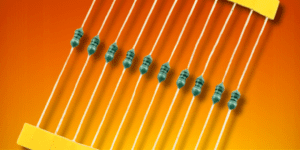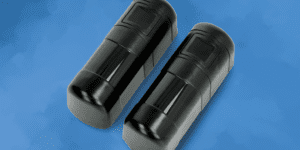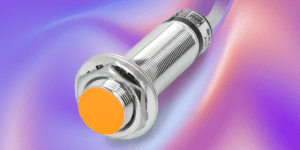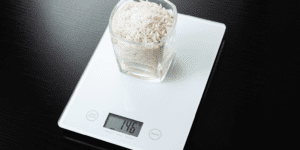Spis treści:
Epoxy resins have reigned for years in the decorative industry and in the creation of striking jewelry. Few people know that these products are also used in model making and electronics. How can we use epoxy resins? Is it difficult to use epoxy resin? What do moisture, electronics and epoxy resin have in common? Let’s discover them together in today’s article.
What is epoxy resin?
This question should be answered at the very beginning. Once we know what product we are dealing with, it is easier to find an application for it. There are usually one or two reactants per epoxy resin model composition.
Typically, these are polyphenols – organic chemical compounds found in plants such as berries, olive oil, cocoa, yerba mate or nuts. They are antioxidants, and most are found in the skins of fruits. Epoxy resin in two-component form is the result of combining a liquid polyphenolic resin and a tailored hardener.
When the resin is mixed with the hardener, a reaction takes place that causes the mixture to change its state from liquid to solid.


The curing time of a joint depends on two main factors. Temperature determines everything – the time it takes for the resin to change its form. Apart from the temperature, the curing time is strongly influenced by the intensity of mixing of the hardener with the resin. For this reason working times can fluctuate somewhat, so it is better to take safe, average values.
Is it difficult to use epoxy resins?
No. Many believe that using epoxy resins can be a tricky process, but if we stick to a few basic rules, nothing will stop us from creating perfect castings. The most important rule of working with epoxy resin is to follow the manufacturer’s recommended proportions. Usually, the resin manufacturer will include information on the packaging about what proportions to mix the resin and hardener to achieve the perfect bond. If there is too much hardener, the resin will crack.
In addition, lumps can appear in the resin and the bond will not be transparent. If there is too little hardener, the resin will not harden and will remain plastic even after a long time. Also keep in mind that epoxy resin and hardener have different densities so the ratio should be measured by weight and not by volume. For the Royal Resin Crystal casting resins available in our offer the ratio is 1:0,27 – for example 100 grams of resin and 27 grams of hardener.
Due to the liquid state of epoxy resin we can afford extremely simple coloring with the help of dyes. The most common and most convenient form of dye is liquid dye.

We also offer scales to help you measure the resin and hardener correctly. Another thing to keep in mind is to thoroughly mix the resin, hardener and colorant. Many people who are starting out with epoxy resins think that stirring the joint a few times is enough to make it uniform properly. Unfortunately, this is a mistake. The resin and hardener are transparent. To be sure, it is a good idea to use an automatic mixer or a drill attachment.
The last important aspect of working with resins is the temperature during the hardening of the joint. Usually we should avoid temperatures below 10°C. If we talk about too high, the maximum limit is usually 150°C. To speed up the curing of resins, hot-air equipment is often used. However, it is usually better to let it work and approach similar practices with limited confidence. Knowing the basic principles of working with resins we can go a step further and finally find out what we can use them for.
Application of epoxy resins
Epoxy resins have been used in various industries for years. It is worth taking a look at the objects that surround us. If you have a popular LCD display under your hand, you will certainly notice two black dots on the reverse side of the PCB – these are epoxy resin protecting the circuitry.
How can epoxy resin protect electronics?
Most often, it is used as a bonding agent to protect against moisture. Using resin to preserve integrated circuits is a sure way to avoid moisture and flooding. Manufacturers of electronic devices often use epoxy resin to protect circuits from mechanical damage. Depending on our needs:
- we can use casting resin – we are mainly talking about flooding transformers and whole circuits, then Royal Resin Crystal is the ideal solution. It is available in 500 g, 1 kg and 5 kg variants.
- For protecting PCBs in SMD technology it is worth using Royal Resin Clear – it will allow easy lamination of any surface.
- All of them can be found here.
In more than just the use of resin in electronics, we can apply it to create castings, laminate surfaces, or fill surfaces in wood or stone to create really impressive art and lovely decor.
Colouring epoxy resin
We mentioned earlier that resin and hardener are colorless substances, but we usually see resin products given color. The easiest way to “color” the resin is to add an additional ingredient, a colorant, to the resin and hardener. We determine the proportions experimentally, add a few drops and mix. If the color is not pronounced enough or differs from the intended color, add more colorant and so on until the desired shade is obtained.
Note – you’re treating this article as a step-by-step tutorial, so we’ll just add this note at the end – an even color will be ensured by adding the liquid dye at the very beginning of mixing.
Once you know what epoxy resin is and what you can use it for, you can move on to making your own projects. If you already have ideas for using epoxy resin, be sure to let us know!
How useful was this post?
Click on a star to rate it!
Average rating 5 / 5. Vote count: 1
No votes so far! Be the first to rate this post.










